Teaching Life and Career Skills With Breakout Edu
In a quickly frantically changing world, educators are all too aware that much of the content we teach may no longer be relevant in 10 years. We do know that if we want our students to succeed, we need to actively teach them what people call “21st century skills” or, as we call them at TCFL, “life and career skills.” These include a wide variety of skills, including critical thinking, perseverance, creativity, and oral and written communication, among others.
Life and career skills can and should be taught everyday, and we do our best to closely integrate them into our curriculum and the activities we plan. However, we also need to make time to explicitly teach them, since teachers need to make sure students are aware of these skills and are able to self-assess and set goals for improvement. But how can we make lessons about these skills fun and interactive for students so that they retain the information?
Fortunately, it turns out that Breakout Edu is ideal for teaching life and career skills. For those of you who are new to Breakout Edu, it’s an interactive game in which students discover clues and solve puzzles in order to open a series of locks to open a box. To succeed, students need to develop teamwork, leadership, critical thinking skills, and perseverance — the exact skills we’d like to equip them with for life.
The plan:
Chantal, a new teacher to our school, decided to use a Breakout Edu game as an icebreaker. She liked the idea of students starting the year by working together to solve problems, and the activity would give her a chance to stand back, watch how they interacted, and see who the natural leaders were. She would be observing their use of the life and career skills, evaluating their strengths and weaknesses both individually and as a group, then wrap it up by having students self-assess those skills and set goals for themselves.
What happened?
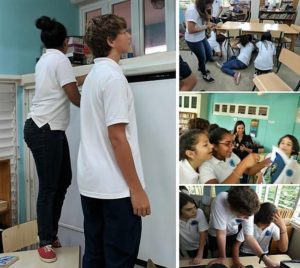 The lesson worked perfectly. The students were highly engaged, giving Chantal the space she needed to simply observe. As the game started, the students worked individually, randomly searching for clues and trying to open the locks by guesswork before they’d even found the clues. At first, they didn’t come up with any strategies, and they gave up fairly easily. When they were unable to find some of the clues, Chantal felt tempted to give them a hint, but instead she pushed them a little with comments like, “Look more carefully, you haven’t found all the clues yet, keep looking.”
The lesson worked perfectly. The students were highly engaged, giving Chantal the space she needed to simply observe. As the game started, the students worked individually, randomly searching for clues and trying to open the locks by guesswork before they’d even found the clues. At first, they didn’t come up with any strategies, and they gave up fairly easily. When they were unable to find some of the clues, Chantal felt tempted to give them a hint, but instead she pushed them a little with comments like, “Look more carefully, you haven’t found all the clues yet, keep looking.”
Eventually, she gave them a hint and then — as they looked around with no real plan — she told them they needed to organize themselves a bit and look more thoroughly.
As the game progressed, students began to form two groups: those working on the physical clues and those working on the digital clues. 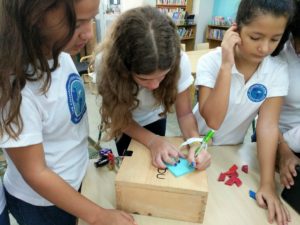 Slowly, they began to communicate better, coming up with strategies and sharing ideas. At one point, they were trying to open a small box with a three-number combination. After a few random tries, someone in the group grabbed a Post-It note and wrote down all the possible combinations. They tried them all, pushing the button after each combination, but nothing worked. Then a voice piped up — “Hey, try moving the button up or down instead of pushing it!” — and, on the third try, it opened. The excitement was contagious! With a renewed surge of energy, they began to work on the other clues.
Slowly, they began to communicate better, coming up with strategies and sharing ideas. At one point, they were trying to open a small box with a three-number combination. After a few random tries, someone in the group grabbed a Post-It note and wrote down all the possible combinations. They tried them all, pushing the button after each combination, but nothing worked. Then a voice piped up — “Hey, try moving the button up or down instead of pushing it!” — and, on the third try, it opened. The excitement was contagious! With a renewed surge of energy, they began to work on the other clues.
Debriefing
At the end of the activity, Chantal gathered the group to reflect on what they’d learned. She asked guiding questions to have them think about how they worked as a team. Here were some of the questions and responses:
What happened at first?
- “We were working independently. Later we started working as a team and it went better.”
- “We didn’t listen to each other very well.”
- “One of our problems, at first, was that we didn’t have a leader.”
What makes a good leader?
- “A leader has to be a good listener.”
- “Has to be consistent and fair, giving everyone a chance.”
- “A leader knows how to give direction without being bossy.”
What did you learn about yourself?
- “I don’t usually think outside the box. I’m a logical thinker, but I should think outside of the box more.”
- “I don’t work well in a team.”
- “I’m a good listener, but I don’t share ideas much.”
- “I need to be more organized and try strategies.”
When Chantal asked them if they had noticed anyone taking on a leadership role, they immediately mentioned three students. They felt that each of them had different strengths: one was good at searching for clues, one was more technical, and one had strong logical thinking skills. One of the students who was mentioned as a leader had always been a little shy and lacked confidence in his abilities, so when he was pointed out as a leader, his eyes opened wide and he said, “Me?” His classmates responded, “Yes, of course, you.” I’m sure that hearing his classmates’ positive feedback will help him open up and develop those leadership skills that he naturally has.
Reflecting on life and career skills
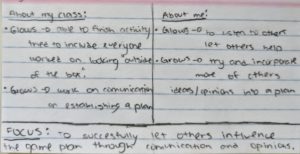 In the next class, as an entrance slip, Chantal asked students to write a brief reflection. She asked them to give “glows and grows” for the class as a team, glows and grows for themselves, and then to set a personal goal for the year. Looking through the reflections, I’m impressed by their self-awareness and candid honesty. Teaching our students to reflect, to be aware of their strengths, and to be able to openly face their shortcomings as they set goals to improve will help our students gain the flexibility they need to confront our ever-changing world.
In the next class, as an entrance slip, Chantal asked students to write a brief reflection. She asked them to give “glows and grows” for the class as a team, glows and grows for themselves, and then to set a personal goal for the year. Looking through the reflections, I’m impressed by their self-awareness and candid honesty. Teaching our students to reflect, to be aware of their strengths, and to be able to openly face their shortcomings as they set goals to improve will help our students gain the flexibility they need to confront our ever-changing world.
As we continue to work on our curriculum, our teachers will be incorporating life and career skills into their lesson plans, but they’ll also be looking for hands-on activities they can use to explicitly teach them. If you have any ideas, we’d love to hear from you in the comments!

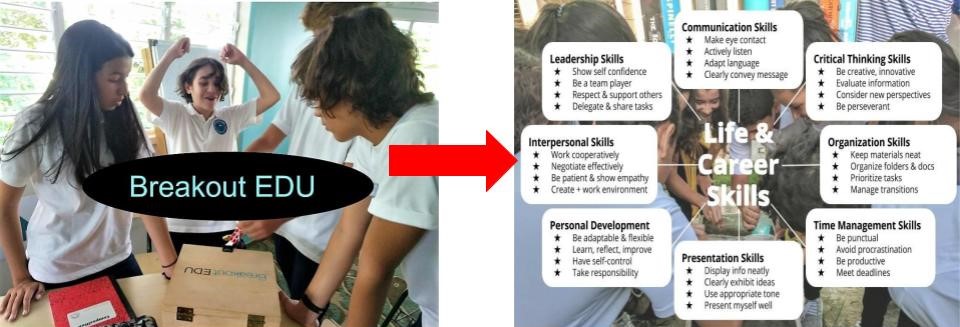
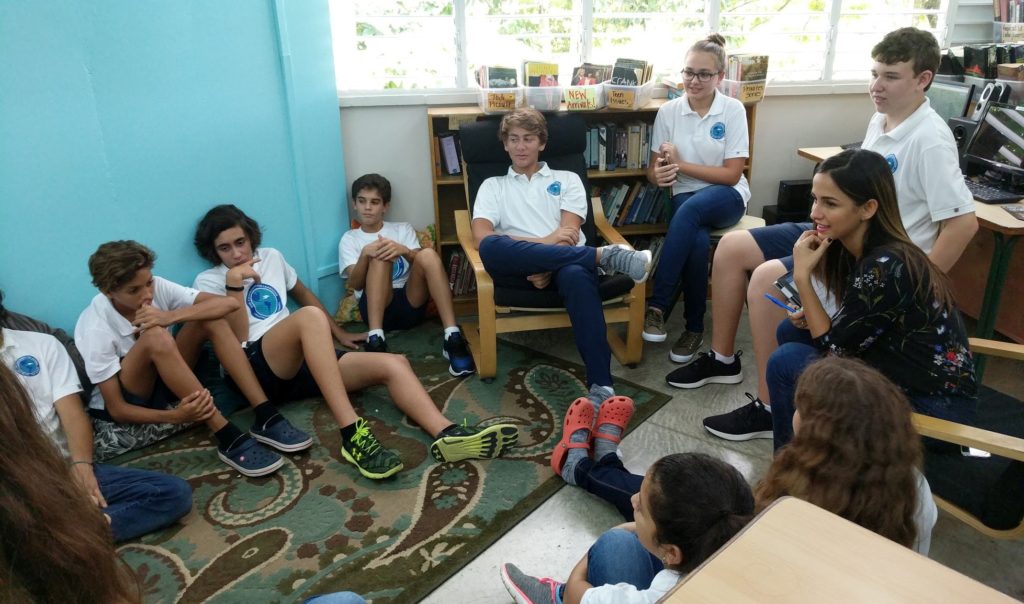
Leave a comment